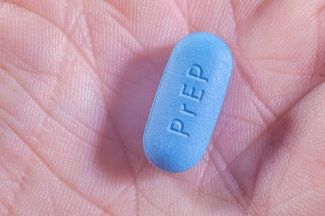Kidney Impairment Risk Low for Oral PrEP Users
The study authors wrote that few people who initiate tenofovir disoproxil fumarate-based oral PrEP rarely experience clinically significant kidney impairment.

Clinically significant kidney impairment was rare among people who initiate tenofovir disoproxil fumarate-based oral PrEP, according to a systematic review and meta-analysis published in The Lancet HIV.
A global team of investigators measured kidney toxicity among tenofovir disoproxil fumarate-based oral PrEP users. They also aimed to examine kidney function among PrEP users in a global implementation project dataset based on individual participant data meta-analysis (IPDMA), they explained. To do this, the investigators searched Pubmed through June 2021 for randomized controlled trials and cohort studies that reported on grade 1 and higher and grade 2 and higher kidney-related adverse events among oral PrEP users (tenofovir disoproxil fumarate-based PrEP alone or in combination with emtricitabine or lamivudine), the study authors wrote.
The adverse events were measured by elevated serum creatinine or decline in estimated creatinine clearance, or estimated glomerular filtration rate, and the study authors also noted that WHO guidelines for tenofovir disoproxil fumarate-based oral PrEP suggests measuring creatinine levels at initiation and regularly thereafter. This regular evaluation is thought to contribute to barriers in PrEP implementation and uptake, the study authors wrote. The WHO, along with Unitaid and the Bill & Melinda Gates Foundation, funded the investigation.
The study authors found 62 unique records for their meta-analysis that included 17 articles reporting on 11 randomized controlled trials involving more than 13,000 participants, they said. In those papers, PrEP use was associated with increased risk of grade 1 and higher kidney adverse events and grade 2 or higher adverse events, they said, while noting that the association with grade 2 and higher events was not statistically significant and that any adverse events were rare. For example, the study authors cited 13 of 6764 participants in the intervention group compared to 6 of 6782 participants in the control group. Additionally, the study authors observed that the adverse events experienced were resolved with PrEP discontinuation, a finding in line with previous studies.
For the IPDMA, the investigators explained that they used individual participant data from 17 PrEP implementation projects and 2 randomized controlled trials, but said those writings were largely unpublished. Nevertheless, the body of research included more than 18,000 participants from 15 countries. Of those participants, 0.42 percent (79 participants) had a baseline estimated creatinine clearance of less than 60 mL/min, the study authors observed. They also noted that the proportions of creatinine clearance increased with increasing age.
The study authors also wrote that in their longitudinal analyses of more than 14,000 PrEP users, 349 participants (2.43 percent) had decline to less than 60 mL/min creatinine clearance. Again, they noted that higher risks were associated with increasing age and baseline creatinine clearance of 60.00-89.99 mL/min and less than 60 mL/min.
“Only a small fraction of individuals screened for PrEP initiation have a low estimated creatinine clearance that would be a contraindication for PrEP (particularly among those younger than 30 years), and very few PrEP users had a clinically significant decline in creatinine clearance after initiation,” the study authors concluded. “Older age and baseline estimated creatinine clearance of less than 90 mL/min were associated with clinically significant declines in creatinine clearance. Although some programs might choose to screen all PrEP users, creatinine screening and monitoring are associated with costs for health systems and place additional burden on PrEP users.”
